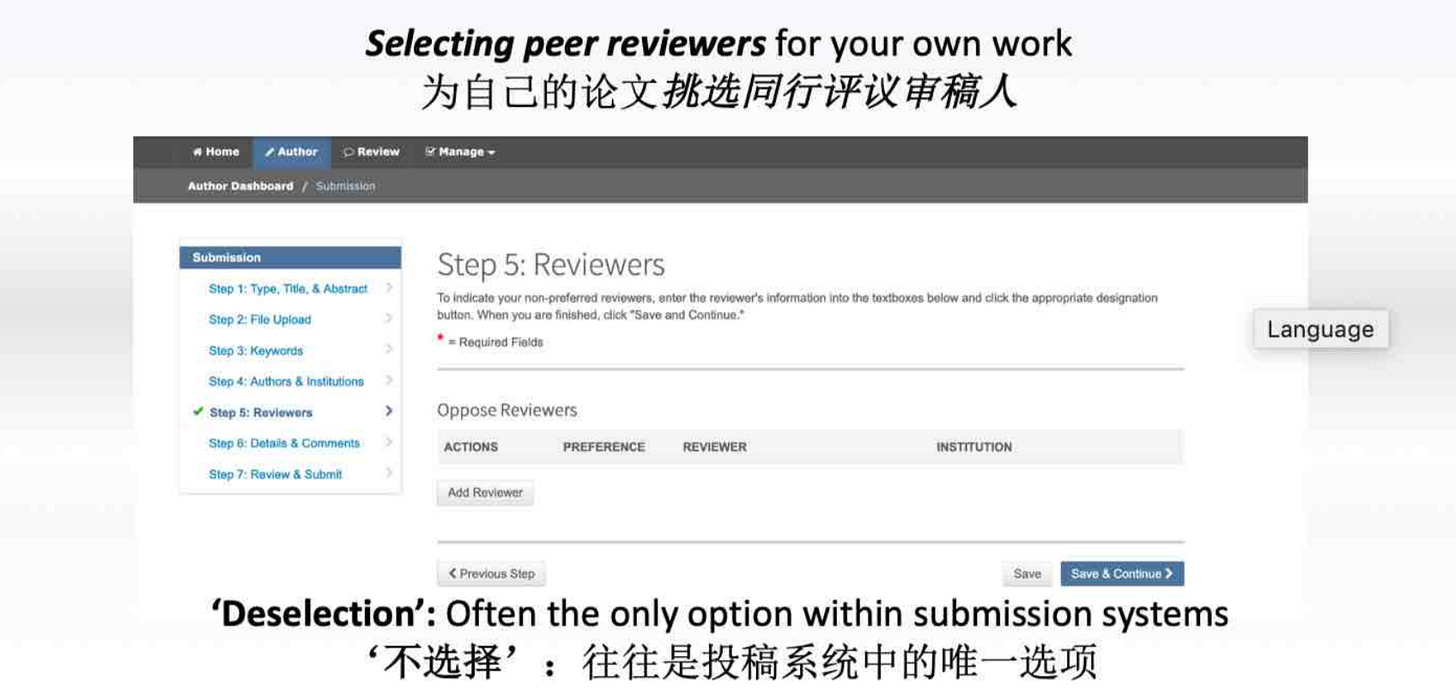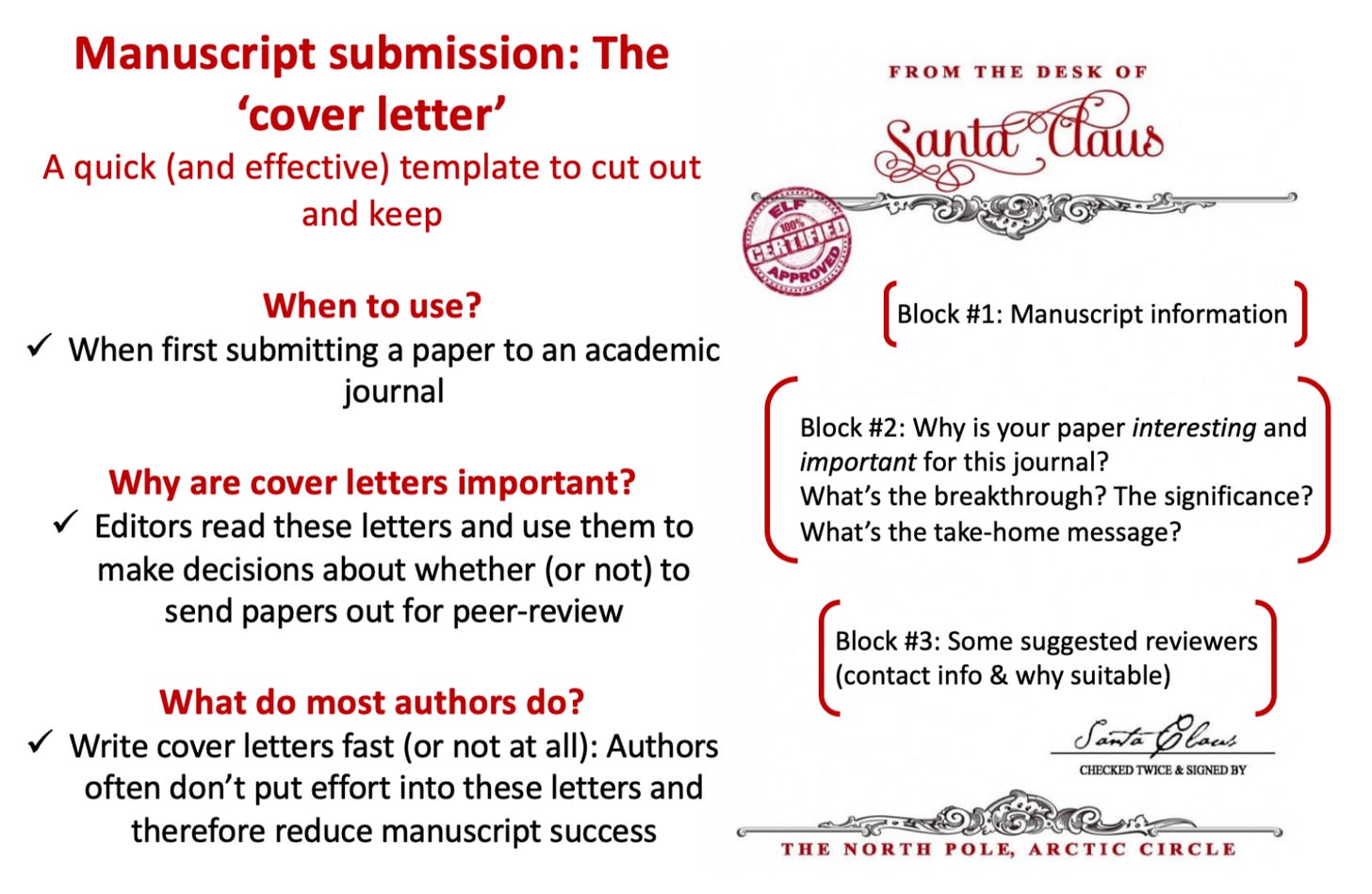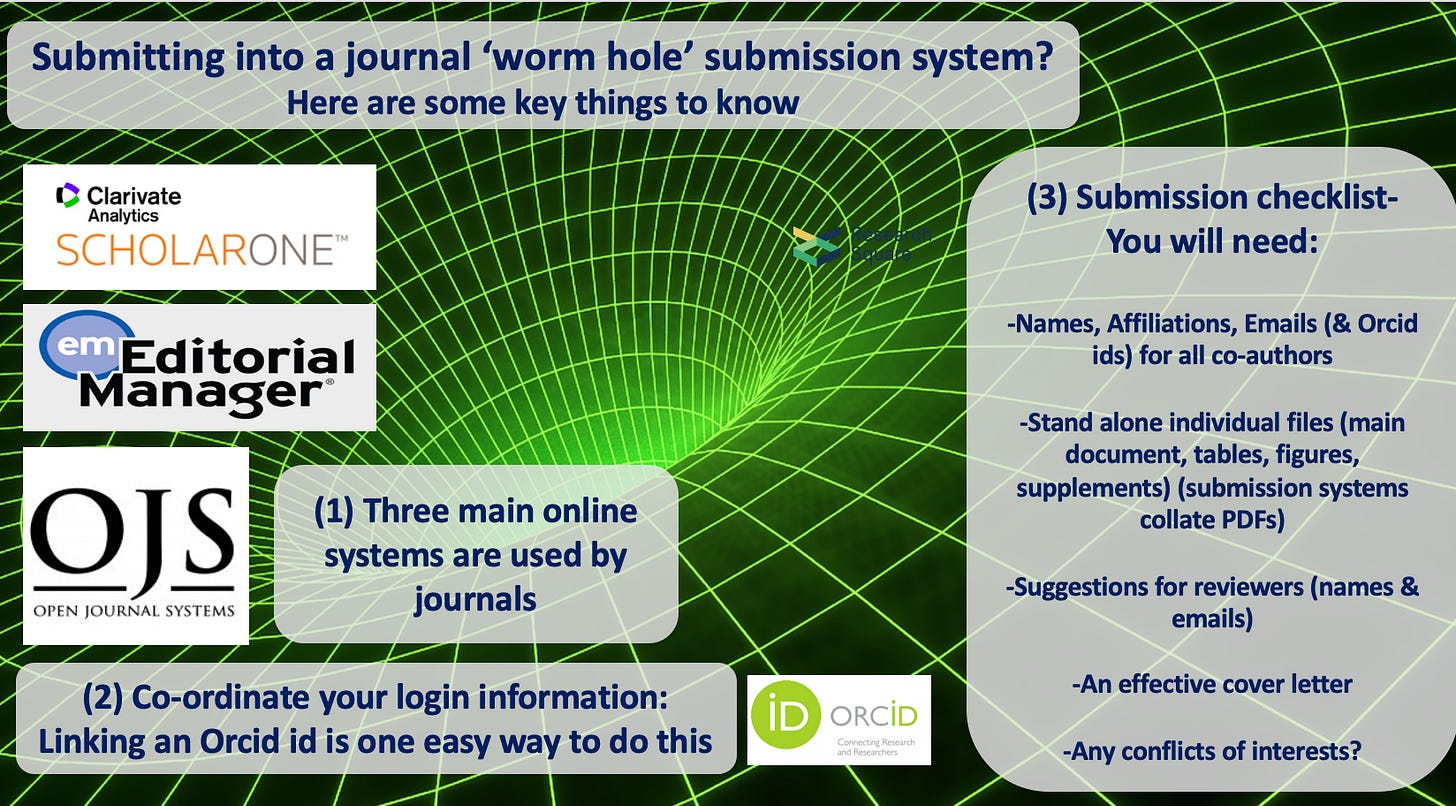How to write a GREAT Cover Letter for your next paper
Writing a paper is half the battle: Convincing an Editor that your work is going to be an AMAZING ADDITION to their journal is also important - Make sure your work gets sent out for peer review! ...
Even great manuscripts struggle to stand out based on the title or its contents alone. They need great cover letters.
Cover letters for journal submission are an underrated part of the submission process. Don’t overlook them. They’re a valuable step to getting your research noticed, published, and all the good things that come after that.
The truth is, most journal editors just don’t have the time to thoroughly read every submitted article in full to decide if it’s suitable for their journal. They use cover letters to help them filter out the most interesting and appropriate submissions first.
Why writing a great cover letter is so important
One of the most important, but often neglected, aspects of academic manuscript submission is writing a great, effective cover letter. Academic authors very often forget to put time into this stage of the process. A cover letter is a communication, created either in an email or as a separate word file, that you address to a journal editor and upload along with your article when making a submission. This letter is hugely important because it is often all an editor will read, alongside your abstract, before making a so-called ‘desk rejection’ decision about your paper.
If your manuscript doesn’t have a cover letter and the 12 other articles on the editor’s desk do, it’s likely that your paper will be looked at last. Putting in that extra effort, just like on a job application, lets you sell your research, avoid quick rejections, and more likely make it to peer review.
You’ll be aware that high profile academic journals, those with good impact factors, often have rejection rates of 90 percent, or higher. This means that nine out of ten papers submitted to high profile international journals will be assessed just by an editor before being either rejected outright or sent out for peer-review. You want to all you can to ensure that your articles are in that 10 percent of manuscript deemed ‘interesting enough’ by an editor to be sent out for peer-review. How can you do this? Above all, you need a good, catchy and interesting title, a well-written, structured, and effective abstract, and a great cover letter. Don’t make the mistake that around seven out of ten authors make and write something boring and generic in your cover letter: ‘Please find our paper enclosed which we hope you will find interesting. Thank you for your time in advance’. You’ve just wasted a huge opportunity.
As an editor I always open an author’s cover letter first before even reading any of the rest of a paper. I do this because I don’t want to waste time: I want to know, quickly, why the article is interesting, why it’s suitable for the readership of the journal I manage, and why we should send it out for peer-review. You need to make sure that you address several key issues in your covering letter when putting it together in order to maximise your chances of success. As noted this is one of the first sections of your paper an editor will read, so make it count. Have a think about the heading below to develop a great cover letter. I recommend writing one or two sentences in response to each of the points below and you’ll then have a working basis for the text of your next cover letter. Later in this article, I’ll provide you with templates for writing cover letters that you can modify based on your own research.
Why is your topic important?
Answering this question is one of the tricks involved in selecting research questions in the first place. As an experienced researcher, you’ll know (of course) which questions in your field are the important ones: What do other colleagues in your area really want to know the answers to? The key trick here though is learning to make your research area, your questions, interesting to other people from wider fields: one of the keys to getting your work published in high profile international journals with decent impact factor is this question of ‘wider relevance’. Think about the kinds of papers that regularly appear in Nature and Science: these articles are interesting to people outside of narrowly defined research fields. One way to do this is to try to relate your research to questions that lots of people are interested in: key, hot topics.
Why are your results significant?
How do the results of your study advance your field? What is their key significance? Answering this question is also important, especially in a measured way: remember that one of the key reasons why academic papers get rejected is when authors try to do much with their data. They try to say too much. Always limit your conclusions to what your data actually support.
What is your key result? (the breakthrough)
Every academic research paper has one key outcome. This must be the case, or you simply won’t have an article that’s worth publishing! Remember when you thought about your key message, in order to make your work more widely applicable and attractive to editors, peer reviewers, and readers? Maybe you used this key message to construct a question that you posed with the title of your work which you then answered in the main body of your paper? This is the time, in the cover letter, to repeat this again for the editor: why is this paper so important and interesting? What’s the key result? The breakthrough that advances your field?
Why is this an advance on previous work?
Research writing builds on previously published work. Of course. As we teach in our writing and publishing workshops, people reading papers, especially peer reviewers, need to be told things that they think they already know: we build our arguments based on what’s already been done, been published in our field, and so even if your research paper is just an incremental advance on previous work, people will still read it and think ‘I agree’. It’s therefore also important to add this to your cover letter: ‘this paper represents a significant advance in our field because ….’. Remember that your editor might not be a subject area specialist, especially if you’ve submitted to a high profile multidisciplinary journal. They will need to be told, in clear and simple terms why your work makes a step forward. You want them to think: ‘aha! I see. This paper is important’.
Why are you submitting to this journal?
Answering this question is a key part of your cover letter. One of the most important parts. Why? Editors love to be told that their journals are important and in the minds of authors. They want to know why you’ve chosen to submit to their journal. Why do you think that your work is particularly attractive to their journal? Make this explicit in your cover letter and spell it out for your editor: ‘we feel that this paper is particularly suitable for publication in your journal because …’. One very good reason to add here might be that similar work to yours has been published previously in this outlet. It will be very hard indeed for an editor not to send your paper out for peer review if you point out to them in your cover letter than similar work has recently already been published there. Collect citations for work similar to yours that you can actually add to your cover letter!
Finally, at the end of your cover letter, don’t forget to write down some suggestions for suitable colleagues who you know will likely provide favorable peer-review comments on your work. This is critical because the cover letter is often your only chance as part of the manuscript submission process where you can do this: many journals have taken down these fields from their online systems because they were so open to abuse from authors. At the journal I edit, we had authors making up email addresses so that their own papers would be sent back to them for ‘peer-review’, putting in the emails of colleagues in their own departments or close co-workers, even one fellow who entered his father’s email address into the online system. Authors will do anything to speed up and control the peer-review process to ensure a favorable outcome.

You should do all you can as well, but remaining ethical at all times! Editors and journals are always on the lookout for potentially dodgy behavior from authors. Remember: there’s nothing new under the sun and we’ve seen it all before! Good luck!









